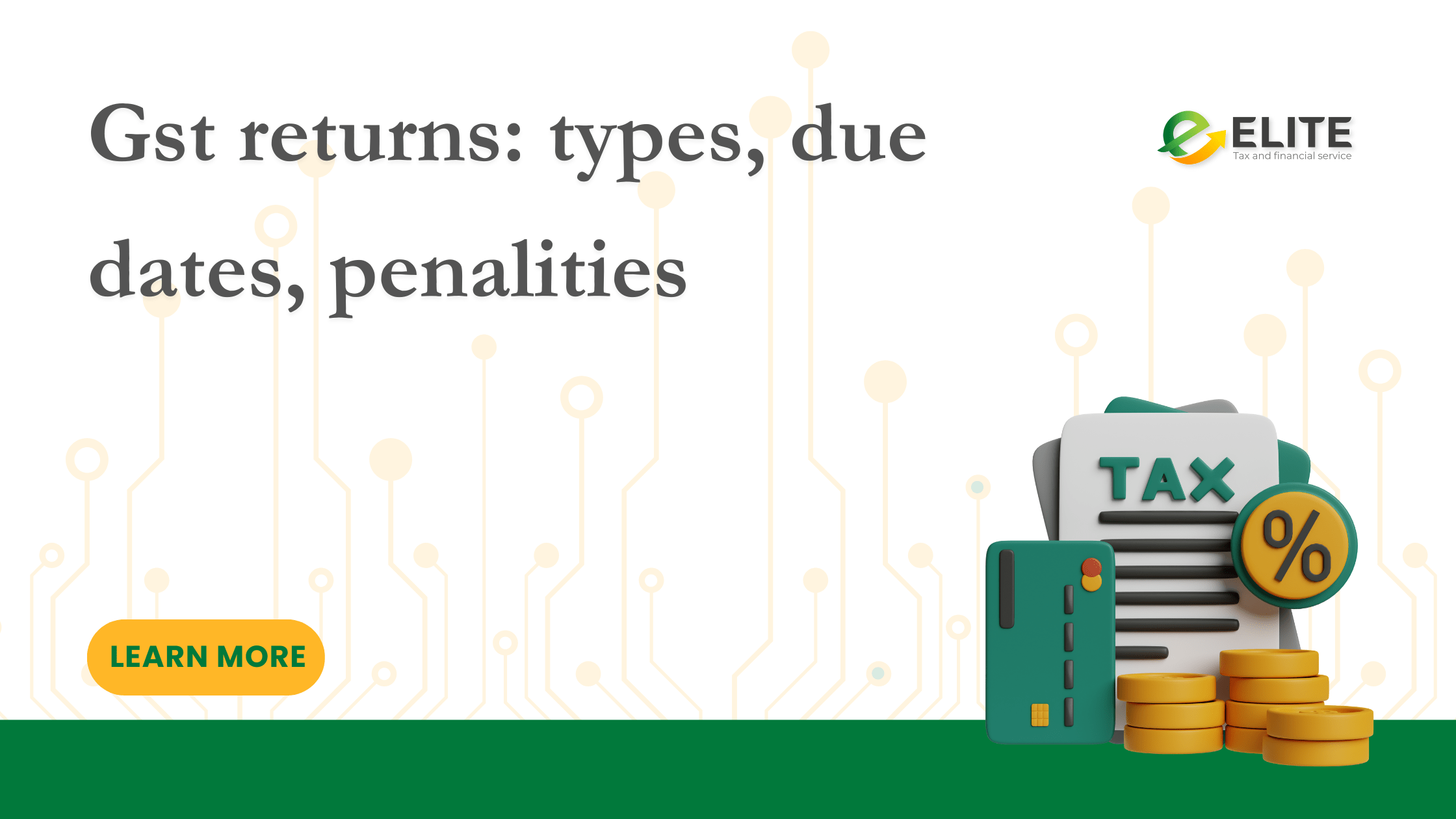Looking for an expert to handle your finance?
Get a FREE Consultation about your personal & business finance from our experts today

Different types of GST returns cater to various business needs and tax obligations. Here’s a breakdown of the primary types of GST returns:
GSTR-1 is a monthly or quarterly return that businesses must file, detailing their outward supplies of goods and services. This return includes:
Filing GSTR-1 is crucial for generating an accurate GST Credit Ledger for buyers and ensuring that your sales are recorded correctly.
GSTR-2A is an auto-generated return that reflects all inward supplies (purchases) made by a business. It’s generated based on the GSTR-1 filings of your suppliers. This return helps in reconciling your purchase data and ensuring that you claim the correct input tax credit.
GSTR-3B is a summary return that must be filed monthly or quarterly. It includes:
Unlike GSTR-1, GSTR-3B does not provide item-wise details but gives an overall summary of your GST liabilities and credits.
GSTR-9 is an annual return that provides a comprehensive summary of all your GST transactions for the financial year. It consolidates the information from GSTR-1 and GSTR-3B to present a detailed account of your GST liabilities and input credits.
GSTR-9C is a reconciliation statement that must be filed by taxpayers with an annual turnover exceeding ₹2 crore. It reconciles the figures reported in GSTR-9 with the audited financial statements, providing a comprehensive overview of your tax compliance.
GSTR-4 is meant for businesses opting for the Composition Scheme under GST. It includes details of outward supplies and the tax paid, and is filed quarterly or annually, depending on the scheme opted.
Get a FREE Consultation about your personal & business finance from our experts today
Filing GST returns on time is crucial to avoid penalties and ensure smooth business operations. Here’s a guide to GST return due dates for 2024:
Failing to file GST returns on time or providing inaccurate information can result in GST filing penalties. Here’s what you need to know:
If you miss the due date for filing any GST return, a late fee is levied. The fee structure is:
Interest is charged on the late payment of GST. The interest rate is 18% per annum, calculated on the amount of GST that was due but not paid.
Providing incorrect information in your GST returns can lead to penalties and scrutiny. These penalties are often substantial and can include:
Ensure that all GST returns are filed on or before the due dates. Set up reminders and maintain a calendar for important deadlines.
Double-check all information before submission. Accurate data entry reduces the risk of errors and associated penalties.
Reconcile your GST records with financial statements regularly to ensure accuracy and identify discrepancies early.
Engage with tax professionals or accountants to ensure compliance and get help with complex GST issues. They can provide valuable advice and avoid costly mistakes.
Keep up-to-date with changes in GST laws and filing requirements. Regularly review updates from tax authorities and participate in relevant training or webinars.
Managing GST returns involves understanding various types of GST returns, adhering to GST return filling due dates for 2024, and being aware of potential GST filing penalties and GST late fees. By staying informed and implementing best practices, you can ensure timely and accurate filing, minimize the risk of penalties, and maintain compliance with GST regulations. This proactive approach will help keep your business in good standing and avoid unnecessary complications.
By following this guide, you can navigate the complexities of GST returns with greater confidence and efficiency.
a Chartered Accountant (CA) is not required to submit a monthly Goods and Services Tax (GST) return in India.
All gst registered businesses have to file monthly or quarterly GST returns and an annual GST return based on the type of business. These GSTR filings are done online on the GST portal.
Due date for filing GSTR-1 for monthly filers is 11th of the next month and for quarterly filers is 13th of next month of quarter. Due date is not different for different states like it is in GSTR-3B.
What is the minimum GST turnover limit? Companies with a yearly turnover of more than Rs. 40 Lakhs (for goods) and Rs. 20 lakhs (for services) are required to register for GST and pay taxes on their taxable goods and services.
The penalty for late filing of GST returns is typically a late fee of Rs. 50 per day for taxable returns and Rs. 20 per day for nil returns. Additionally, interest may be charged on the unpaid tax due at a rate generally around 18% per annum, calculated from the due date of the payment until the actual payment date.
© 2024 – Website Designed By Prashanth C